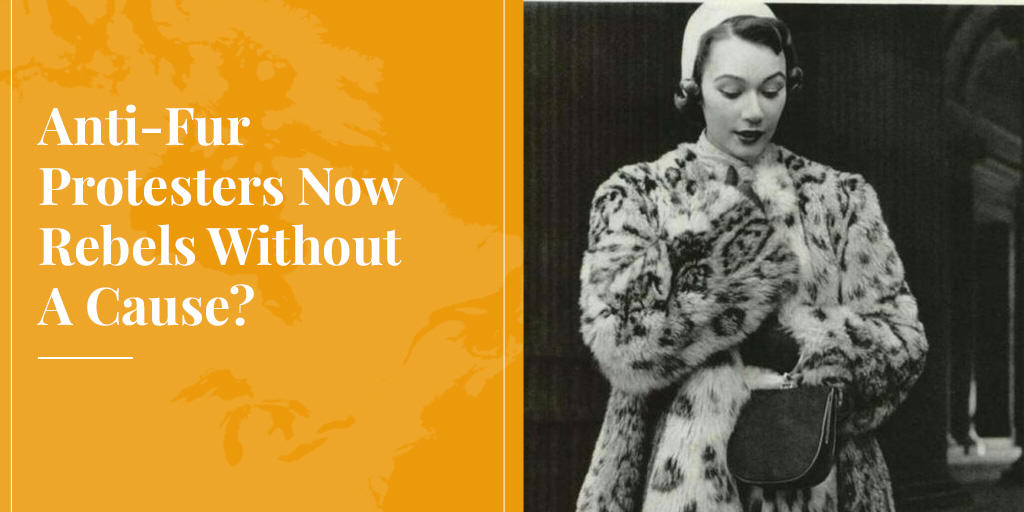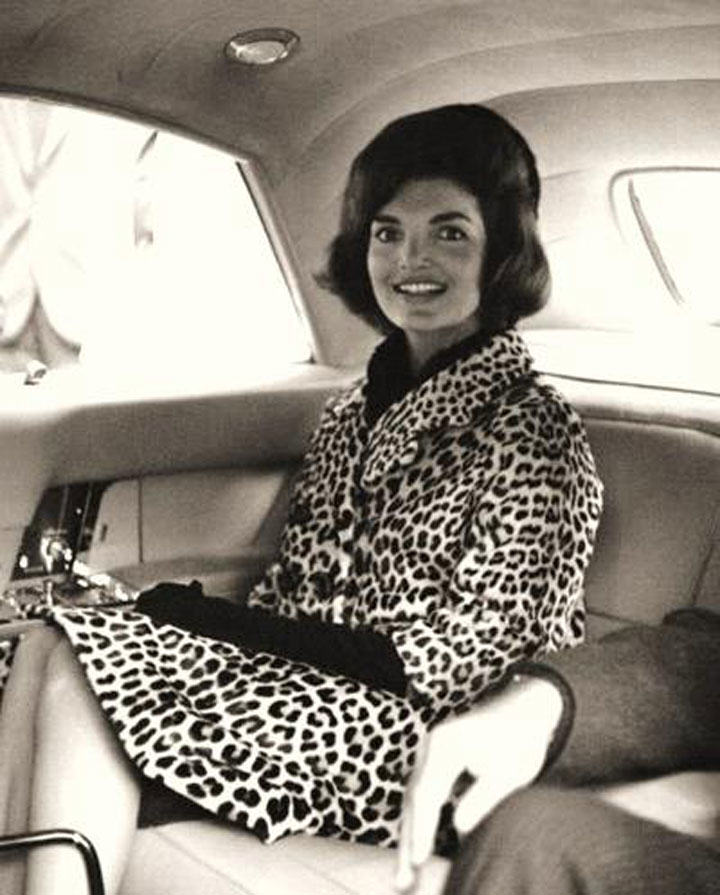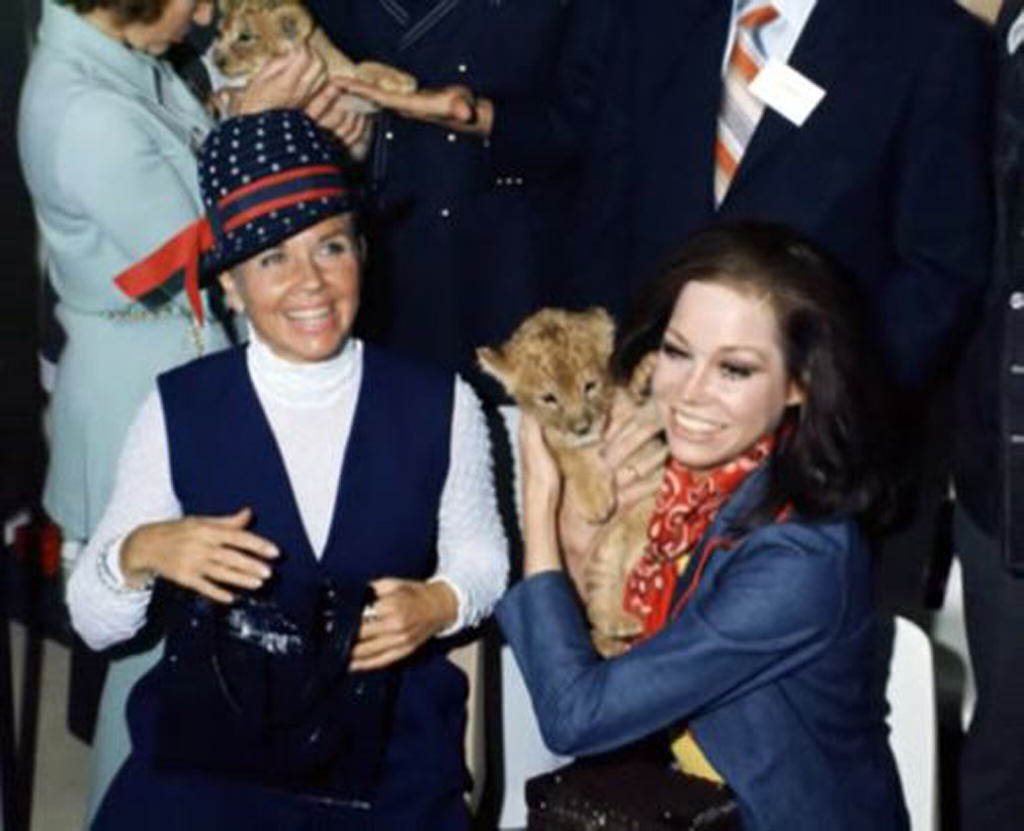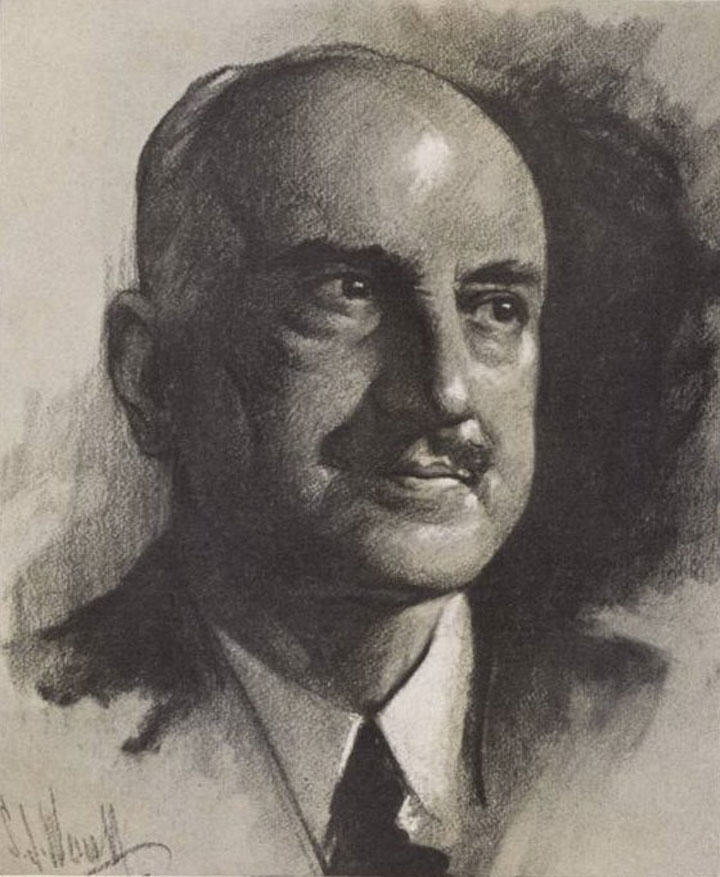
Anti-fur protesters today are an established part of our autumn scenery, like falling leaves or the southbound migration of Canada geese. But, in fact, all of the problems that originally triggered such protests have been addressed and resolved. So are the current crop of anti-fur protesters rebels without a cause? Or worse, are their protests now just a pretext for intolerance, a smokescreen for imposing on others a radical new form of militant vegetarianism?
Is it time to say “enough with the anti-fur protesting”?
A quick review of the history of anti-fur protesters raises serious questions about why they still exist.
Early Anti-Fur Protesters
Organized opposition to fur trapping began in 1925 when American adventurer and spy-turned-diplomat Edward Breck founded the National Anti-Steel Trap League after an encounter with a trapped bear during a visit to Nova Scotia. This was the peak of the “Roaring Twenties”, when raccoon, beaver and other wild furs were the rage. Fur prices were high and, with few government controls, fur-bearer populations were depleted in some regions. The two key themes of anti-fur protesting had emerged: concerns about the humaneness of trapping methods (animal welfare) and the need to ensure that trapping did not deplete furbearer populations (conservation/sustainability).
The Great Depression and World War Two swept away the exuberant fashions of the 1920s, and by the 1950s wild species represented barely 25% of North American fur sales. Concerns about trapping receded.
But in the 1960s – in an effort to expand the market beyond mink, Persian lamb and other classic farmed furs – the fur trade reintroduced wild species as “fun furs”, an initiative that received a major boost when Jackie Kennedy bought a leopard-skin coat in 1962. Ironically, this was the same year that Rachel Carson’s Silent Spring was published, heralding the birth of the modern ecology movement.

Protest was in the air. In 1965, a film broadcast by Radio-Canada raised conservation and animal-welfare concerns about the northwest Atlantic seal hunt – a hunt that was then still little known and largely unregulated.
SEE ALSO: Ten lessons from 30 years battling animal rights.
And while trapping was now carefully regulated in North America, full international controls were not yet in place: the US Endangered Species Act would only be passed in 1969, while the Convention on International Trade in Endangered Species of Wild Fauna and Flora (CITES) was not implemented until 1975. This was the context in which Cleveland Amory launched his Fund for Animals in 1967, and his first major campaign was against the use of fur from leopards and other endangered wild cats.
Celebrities, Media and Fake Fur
In his book Man Kind? Our Incredible War on Wildlife (1974), Amory recalled that his anti-fur campaign was sparked by a visit from a representative of fake-fur manufacturer E.F. Timme & Son. The company offered to give $200 and a fake fur coat to any “socialite” who would publicly denounce the wearing of furs from endangered species. Amory suggested that they up the ante to $2,000 and proposed the names of several well-known actresses who would decry the wearing of any wild fur. As members of his board, they could also be counted on to hand over the cash to his Fund.
With Doris Day, Mary Tyler Moore and others, the Fund for Animals became the first animal protection group to take a page from the ad man’s book and use “celebrities” to attract media attention. Long before Greenpeace brought Brigitte Bardot to the seal hunt (1977) and PETA promoted a string of models and B-list actresses to declare that they “would rather go naked than wear fur,” Amory understood that “the medium is the message.”

Amory also took up the animal-welfare side of the fur debate. The Canadian Association for Humane Trapping (CAHT) had sent him a seven-minute film they claimed was “filmed on the trap-line,” although it was later revealed that many scenes had been staged in a compound. It was called They Take So Long to Die, a line from an old National Anti-Steel Trap League poem. Amory sent the film to CBS Evening News, and on March 21, 1972, 20 million Americans watched animals struggling in leg-hold traps. Amory appeared on the program to demonstrate a quick-killing Conibear trap, which he presented as a more humane alternative.
It is important to note that Amory and the CAHT were arguing for more humane and sustainable trapping, not for a ban on trapping or fur use. The CAHT had made its film to pressure the Canadian government to seriously research improved trapping methods, and when the Federal-Provincial Committee on Humane Trapping was set up in September 1973, the film was withdrawn from circulation. [For a full history of trap research and development, read our interview with humane-trap champion Neal Jotham.]
As legitimate conservation and animal-welfare concerns were being addressed, however, a new kind of anti-fur campaign was emerging.
Reformers Lose Their Way
The pioneering work of the Federal-Provincial Committee on Humane Trapping was taken up by the newly-formed Fur Institute of Canada, in 1983, and this continuing research has resulted in significantly improved trapping methods, trapper education, state and provincial regulations, and the Agreement on International Humane Trapping Standards. But while the CAHT had withdrawn They Take So Long to Die, some of the footage was incorporated into Canada’s Shame, a new film produced by the Vancouver-based Association for the Protection of Fur-Bearing Animals (APFA).
While condemning the Fur Institute’s world-leading trap research program as a sham, APFA founder George Clements was unable to suggest how it might be improved when he was questioned under oath by the Parliamentary Committee on Aboriginal Affairs and Northern Development, on June 5, 1986. “If you are really serious, then I would really have to go back home and think about that,” Mr. Clements confessed. When another MP pointed out that “it is very easy to criticize and belittle certain things but [MP John Parry] asked if you had a game plan or a solution to this particular problem,” Mr. Clements was contrite: “I have been put in my place,” he said.
Now known as The Fur-bearers, the APFA has since abandoned any pretense of seeking more humane trapping. It now claims that “there is no such thing as a humane trap,” and calls for the complete abolition of “the commercial fur trade, including trapping and fur farms.”
From Leg-hold Traps to Fur Farms
As the popularity – and prices – of fur reached record levels through the 1970s and 1980s, protest activity intensified. Large, rowdy, anti-fur demonstrations became a common sight in many cities. And even when fur prices and sales retreated with the crash of the stock market in 1989 and the economic recession that followed, the protests – and political lobbying – continued, with leg-hold traps as the main target.
As they did with the seal-hunt, activists zeroed in on the European Parliament as a weak link in the political chain. The European Economic Community had banned the importation of furs from young (whitecoat and blueback) seal pups in 1983, although there was no conservation or animal-welfare justification for doing so. In 1991, the EEC adopted Council Regulation 3254/91 which “prohibits the use of leg-hold traps in the Community and the introduction into the Community of pelts and manufactured goods of certain wild animal species originating in countries which catch them by means of leg-hold traps or trapping methods which do not meet international humane trapping standards.”
Anti-fur activists thought this meant the end of the wild-fur trade, because “international humane trapping standards” did not exist at that time. But they were wrong. With the implementation of the Agreement on International Humane Trapping Standards in 1997, it became clear that animal-welfare concerns about trapping were being seriously addressed, much as conservation and sustainability problems had been addressed by national and international regulations in the 1970s.
In response, anti-fur protesters shifted their focus to fur farming. Over the past decade, activists have released a series of undercover videos to bolster their claim that mink and fox suffer on fur farms. In fact, a wide range of government regulations and industry codes of practice ensure that farmed fur animals receive excellent nutrition and care. Farmers have every reason to abide by these codes, because there is no other way to produce high-quality fur.
But in commercial-scale production, there will always be a few sick or injured animals; farmers often keep these in a special section of the shed where they can be easily observed and cared for. But activist videos don’t explain that. Nor do they explain that mink will appear agitated when disturbed in the middle of the night by strangers carrying cameras and bright lights. And as if that were not enough, the camera can always focus on manure under the pens (where it is supposed to be), or the voice-over can ominously inform us that these animals are being “raised in small cages” only to be “slaughtered and skinned for their fur.”
Rebels Without a Cause?
As this quick history reveals, the original anti-fur protesters were motivated by legitimate animal-welfare and conservation concerns. Over the past 50 years, however, these concerns have been addressed. Trapper training, new regulations, and continuing scientific research ensure that trapping in North America is now conducted responsibly and sustainably. Farmed fur animals receive excellent nutrition and care, as required by government regulations, industry codes of practice, and the demands of a highly competitive international marketplace.

In fact, anti-fur protesters are no longer driven by real conservation concerns. Greenpeace, the World Wildlife Fund, and the International Union for the Conservation of Nature do not protest the fur industry because they do not consider it an environmental problem.
And anti-fur protesters are not really driven by animal-welfare concerns either. Animal-welfare groups (like the CAHT) that accepted the responsible use of animals but worked to improve the humaneness of trapping, have been superseded by media-savvy “animal rights” groups, like PETA. And while PETA distributes videos that it claims show animal-welfare abuses – and it will always be possible to find a bad apple somewhere – its publicly-stated objective is the elimination of any use of animals, even for food or vital medical research.
But when 95% of the population still eat meat and wear leather, it is disingenuous to claim that it is immoral to use fur that is produced responsibly and sustainably.
So the question remains: Is there still any justification for anti-fur protesters doing what they do? Is protesting against fur now just a way to attack “the establishment”, or a smokescreen for promoting a radical “animal-rights” agenda? Or perhaps they have simply lost their way.
As American philosopher George Santayana said so succinctly, “Fanaticism consists of redoubling your effort when you have forgotten your aim.”











Thank you for a sane look at the efforts that the fur industry has been using for the sake of the animals and the quality of their products.
I have run into PETA supporters several times and have always pointed out to them the leather shoes, purses or leather belts that they are using as they stand there in judgement of others.
Rebels without a cause or clue is a much better moniker!
I saw a mink farm that had spent thousands upon thousands of dollars to keep and care for the animals properly, be forced to close down near my mothers home in the U.P. of Michigan because of radicals that kept releasing the minks, only to have them run over on the highway that ran next to the farm. This happened a few times! Now, who did they help by doing that? Certainly not the minks!! They then forced a family and it’s employees with a viable business, to suffer greatly in an economically depressed area.
These radicals helped no one or any animal in this case. And they did it repeatedly! If they really were worried about the welfare of the animals they would not have repeated the incident!
Little minds causing huge consequences.
Sorry but I think you’ll be hard pushed to find a member of PETA wearing a belt or shoes. I am an anti fur activist and i do agree freeing the animals into the wild is ridiculous. We do not need to wear animal skin or fur and will fight to the end to stop it. x
Great article,
Really nice to have facts and research
Much of the tide has turned since the 1980’s as people began to wake up and realize it’s animal rights groups that are paying people to skin animals alive in a twisted attempt to keep outrage alive and keep their jobs at the expense of the animals they claim to represent.